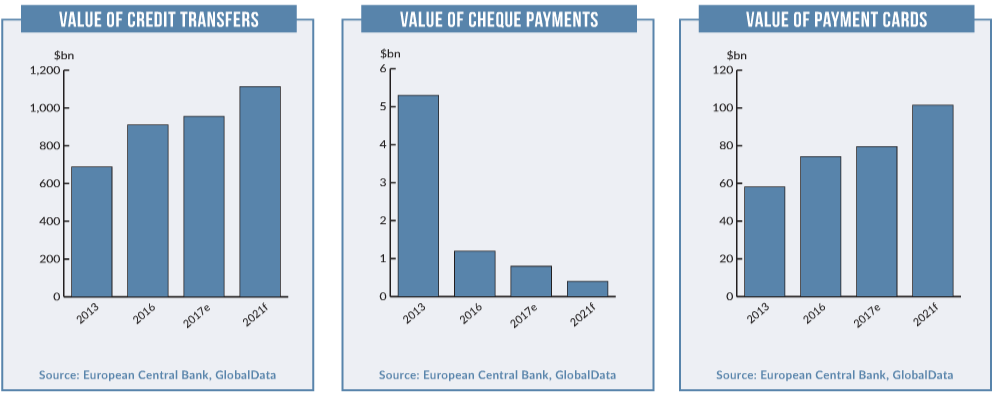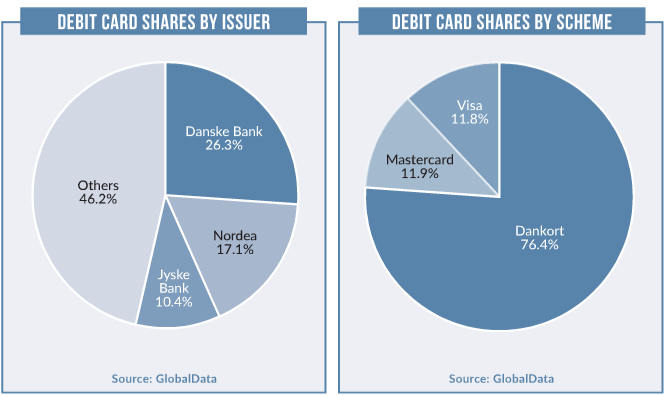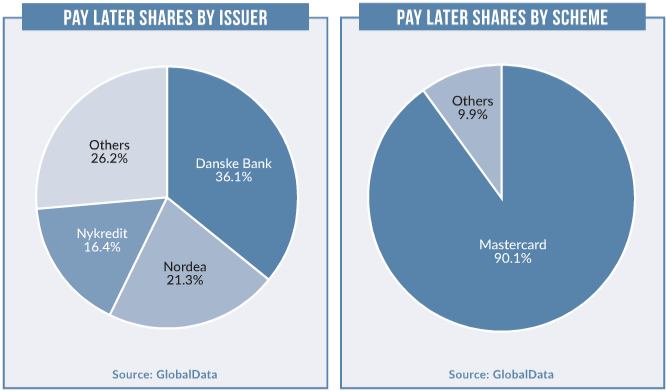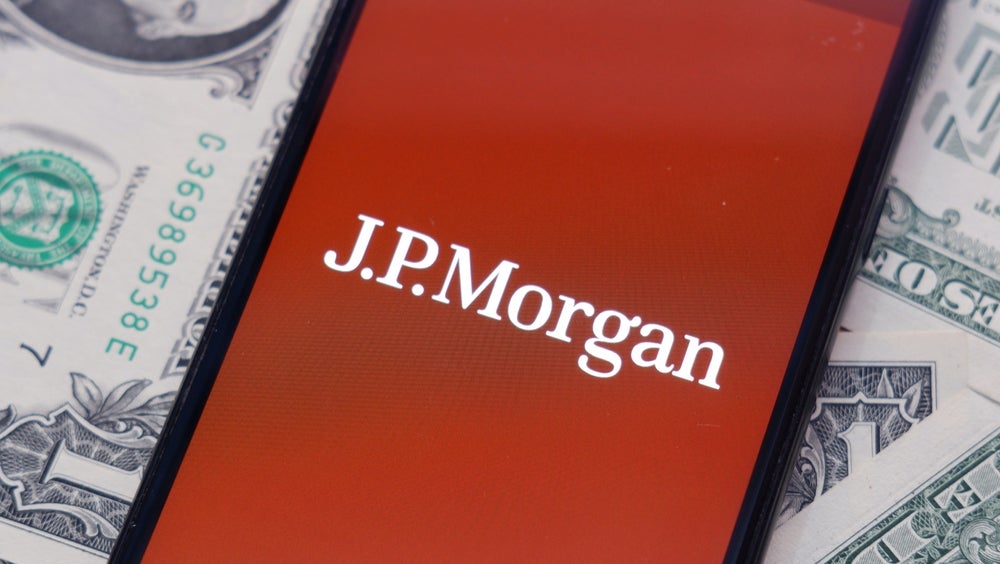The Danish cards and payments industry is well developed, and its consumers are prolific users of payment cards.
The country has the highest frequency of use in the world, with 210 transactions per card in 2017, with use of cash continuing to decline.
Denmark is increasing its efforts to become a cashless society, backed by government support for, and promotion of, electronic payments. Danish consumers are typically very comfortable with payment cards and mobile phones, with Dankort the most commonly used card scheme in the country and MobilePay leading the way in the peer-to-peer (P2P) payment space.
With preference for mobile proximity and contactless payments gradually growing among Danish consumers, there is an opportunity for providers to emphasise their advantages over traditional payment tools in order to boost interest and increase overall adoption.

Dankort dominance
How well do you really know your competitors?
Access the most comprehensive Company Profiles on the market, powered by GlobalData. Save hours of research. Gain competitive edge.

Thank you!
Your download email will arrive shortly
Not ready to buy yet? Download a free sample
We are confident about the unique quality of our Company Profiles. However, we want you to make the most beneficial decision for your business, so we offer a free sample that you can download by submitting the below form
By GlobalDataDankort is the national debit card scheme, and accounted for 76% of total debit card transaction value in 2017.
Dankort operates under a zero-interchange-fee model, and has dominated the market since its introduction in 1983.
However, Mastercard and Visa are also strengthening their presences in the country. To facilitate international payments using Dankort cards, banks offer Visa/Dankort co-badged cards, which can be used as a Dankort card in Denmark and as an international Visa card outside the country.
E-commerce
E-commerce posted a CAGR of 17% in the four-year period to 2017 to reach DKK115.4bn ($16.33bn) in 2017.
According to PostNord’s E-Commerce in the Nordics report, Denmark has the third-highest percentage of online shoppers in the Nordic region, with 63% of consumers shopping online at least once a month in 2016. Payment cards and bank transfers remain the preferred payment methods, accounting for 76.3% of the e-commerce transaction value in 2017. Digital and mobile wallets account for nearly 20%.
Contactless embraced
Contactless payments are gradually growing in Denmark.
The first contactless Dankort was launched in Denmark in 2015; by the end of 2016, more than half of all issued Dankort cards had a contactless feature, and contactless payments accounted for more than 15% of all Dankort payments according to the central bank.
However, payment providers still need to educate consumers on the benefits and advantages of contactless payments, stressing the technology’s ease of use and convenience compared to PIN-based cards.

Subdued growth
Overall, Danish consumers are not prolific users of pay-later cards.
Frequency of use per card per year stood at 33.6 in 2017, while Sweden and Norway recorded frequencies of 60.7 and 34.1 respectively. Consumers in Denmark have become more prudent in their spending habits due to growing debt, resulting in lower usage of credit cards. Household debt in Denmark was among the highest in the OECD according to its 2016 Denmark Economic Survey report. The ratio of household debt to GDP in Denmark was 127 – three times higher than disposable income – with the majority held in mortgages.
Many Danish consumers have an international credit card such as Mastercard or Diners Club, typically as a supplement to a Dankort card, or as a company card. Danes use international credit cards less frequently than other payment cards. In 2016, around four in 10 payments with international credit cards were made outside of Denmark, according to the central bank.
Card infrastructure
The number of POS terminals fell between 2013 and 2017, from 144,978 to 126,584 at a CAGR of -3.3%. However, a forecast CAGR for the period 2017-2021 of 1.6% will see the total figure climb to 134,707 in 2021.
With a growing preference for contactless payments, the number of POS terminals is anticipated to rise gradually.
The country’s expanding payment card market has attracted new entrants to the Danish POS space. For instance, in September 2016 Dagrofa – one of the country’s largest grocery stores – replaced all its terminals with over 2,000 new Verifone terminals that enable consumers to make contactless card and mobile payments.
Meanwhile Danish startup Shopbox introduced a cloud-based POS solution in April 2016, which provides faster transaction processing at coffee shops, clubs and sports arenas, where transaction speed is an essential factor in maximising footfall. Shopbox’s POS solution runs on both iOS and Windows-based tablets.






